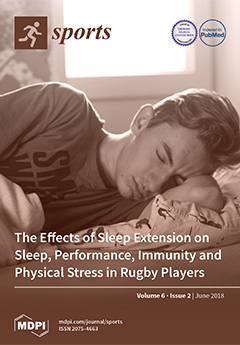This study investigated relationships that linear speed and lower-body power have on change-of-direction (COD) speed in collegiate women soccer players. Data from two Division I (
n = 39) and one Division II (
n = 18) schools were analyzed. Subjects were assessed
[...] Read more.
This study investigated relationships that linear speed and lower-body power have on change-of-direction (COD) speed in collegiate women soccer players. Data from two Division I (
n = 39) and one Division II (
n = 18) schools were analyzed. Subjects were assessed in: power (vertical jump (VJ); jump height, peak anaerobic power measured in watts (PAPw), power-to-body mass ratio (P:BM); linear speed (10-m sprint); and COD speed (modified T-test (MTT), 505, COD deficit). Independent samples T-tests derived significant between-group differences, with effect sizes (
d) calculated. Pearson’s correlations determined relationships between COD speed, linear speed, and power, with regression equations calculated. Division I players demonstrated superior 505, COD deficit, VJ height, PAPw, and P:BM (
d = 1.09–2.21). Division II players were faster in the MTT (
d = 1.51). For all players, the 505 correlated with the 10-m sprint (
r = 0.39–0.53) and VJ height (
r = −0.65–0.66), while the COD deficit related to the 10-m sprint (
r = −0.77–0.82). The regression data supported these results. Division I players were superior in the 505 and COD deficit, and expressed their power in the 180° 505 task. Division II players should enhance lower-body power and the ability to perform 180° direction changes.
Full article






